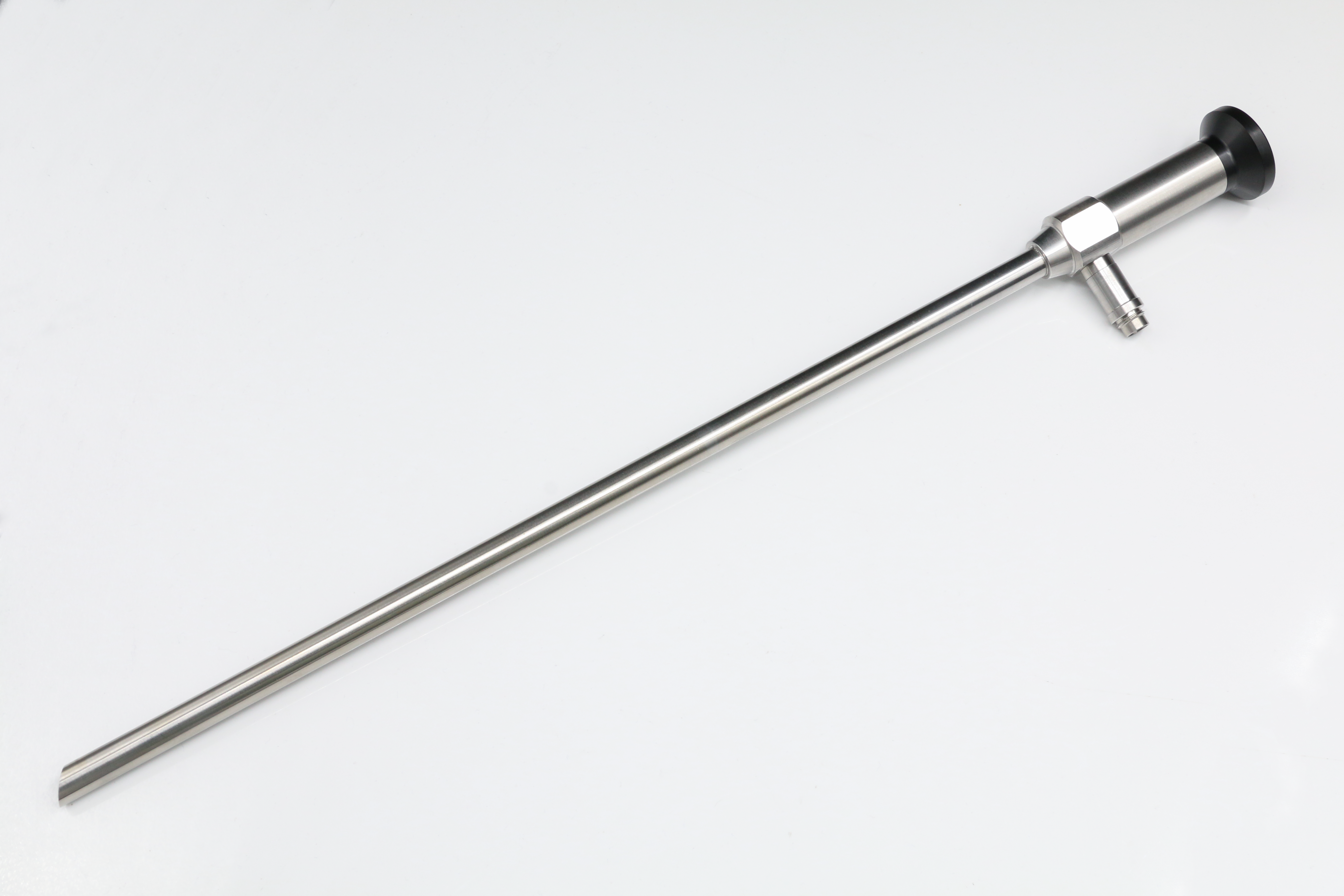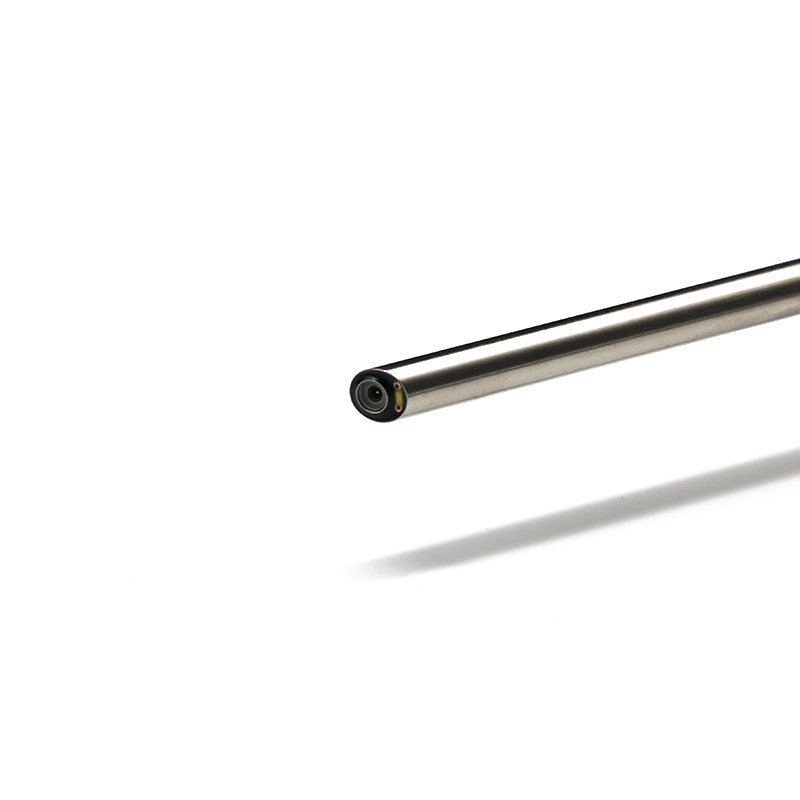Views: 0 Author: Site Editor Publish Time: 2025-04-28 Origin: Site











Endoscopy has revolutionized the field of medical operation and surgical operation by enabling direct visualization and access to internal organs with minimal invasiveness. Among the many types of endoscopes, the Rigid Endoscope stands out as a crucial tool in general surgery departments, endoscopic surgery, and surgical examinations. With recent advancements in medical imaging and surgical tools, understanding the various types of endoscopes has become increasingly important for healthcare professionals aiming to enhance diagnostic accuracy and procedural efficiency.
This article will offer a deep dive into the different types of endoscopes, with a strong emphasis on the Rigid Endoscope and its variants. We will also explore its applications, features, and benefits using real-world comparisons and data to aid in product evaluation and clinical decision-making.
Endoscopes can be broadly classified into two categories:
Flexible Endoscopes – Used for procedures requiring navigation through curved or tortuous paths like gastrointestinal or bronchial passages.
Rigid Endoscopes – Preferred in scenarios where a straight access path is feasible, offering higher image clarity and more control for surgical interventions.
While flexible endoscopes are widely used in internal medicine, it is the Rigid Endoscope that dominates in endoscopic surgery, particularly in fields such as otolaryngology, urology, gynecology, and orthopedics.
A Rigid Endoscope is a non-flexible tube equipped with a series of lenses and a camera that transmits high-resolution images to a monitor. This makes it a go-to device for visualizing and operating within confined anatomical spaces with minimal trauma to surrounding tissues. The rigid structure provides surgical precision, essential for tasks like biopsies, tissue removal, and repair.
Superior image clarity due to rod lens technology.
Durability and longevity of equipment.
Easy sterilization and disinfection, reducing cross-contamination.
Optimal control and accuracy during procedures.
| Type of Rigid Endoscope | Diameter | Viewing Angle | Best Used For | Field of Application |
|---|---|---|---|---|
| 3mm Rigid Endoscope | 3mm | Variable | Pediatric use, ENT microsurgeries | ENT, pediatrics, gynecology |
| 0 Degree Rigid Endoscope | 4mm–10mm | 0° | Straight-line visualization | General and orthopedic surgeries |
| 30 Degree Rigid Endoscope | 4mm–10mm | 30° | Angular view, better spatial awareness | Urology, gynecology |
| 70 Degree Rigid Endoscope | 4mm–10mm | 70° | Deep angular areas, detailed inspections | ENT, arthroscopy, sinus surgery |
| 10 mm Rigid Endoscope | 10mm | Variable | Wide lumen inspection, laparoscopy | General surgery, gynecology |
This table helps visualize the core specifications and practical use-cases of each type of Rigid Endoscope, aiding procurement and clinical decisions.

The 3mm rigid endoscope is tailored for minimally invasive procedures in narrow anatomical passages. Commonly used in pediatric and ENT surgeries, this variant allows for precision without excessive dilation or trauma. It is particularly favored in nasal and vocal cord inspections where compact size is crucial.
Benefits:
Minimally invasive
Reduced patient discomfort
Fast recovery times
The 0 degree rigid endoscope provides a direct, forward-looking view, ideal for straight-line access procedures. It’s frequently utilized in laparoscopic and arthroscopic surgeries where the surgical field aligns with the scope's line of sight.
Application Areas:
Abdominal cavity inspections
Joint surgeries
Gynecological assessments
The 30 degree rigid endoscope is one of the most versatile angles available. It offers a slightly oblique view, enabling better spatial awareness and depth perception. This is particularly beneficial in procedures where tissues or lesions are not directly in front of the scope.
Use Cases:
Bladder inspections
Hysteroscopy
Laparoscopy for adhesions or cysts
The 70 degree rigid endoscope provides a steeply angled view, perfect for viewing around corners or inspecting the undersides of organs and tissues. This model is a staple in ENT, arthroscopic, and sinus surgeries, where surgeons need to examine areas hidden from a direct line of sight.
Advantages:
Excellent visualization of hard-to-reach areas
Ideal for sinus surgeries and complex joint evaluations
The 10 mm rigid endoscope is designed for procedures requiring a broader field of view. Its larger diameter accommodates high-definition optics, making it the preferred choice in general surgery and laparoscopic gynecology.
Clinical Advantages:
High image resolution
Efficient in larger anatomical spaces
Useful for both diagnostic and therapeutic purposes

Recent years have seen significant innovation in Rigid Endoscope technology. Manufacturers are focusing on improved lens systems, anti-fogging features, and integrated light sources to optimize image clarity and reduce operation time. Here are some recent developments:
4K and 3D Imaging: Provides surgeons with better depth perception and tissue detail.
Ergonomic designs: For reduced hand fatigue during long procedures.
Integrated camera and lighting systems: To streamline equipment and minimize setup time.
Disposable scopes: Gaining traction for reducing infection risks in high-turnover settings.
Moreover, with AI integration and real-time surgical navigation tools, the modern Rigid Endoscope is becoming an integral part of precision surgery.
In both elective and emergency surgical operations, Rigid Endoscopes are indispensable. They enhance surgical accuracy, reduce recovery time, and minimize the risk of complications. Common examples include:
Appendectomy
Gallbladder removal
Hernia repairs
In a general surgery department, Rigid Endoscopes are used daily for both diagnostic and therapeutic interventions. Surgeons benefit from their ability to perform high-precision procedures with minimal incisions.
Endoscopic surgery thrives on the precision and reliability of Rigid Endoscopes. From sinus surgeries to orthopedic procedures, these scopes allow for shorter hospital stays and faster healing.
In surgical examination, Rigid Endoscopes allow for real-time visualization of organs and tissues, leading to quicker diagnoses and on-the-spot interventions such as biopsies or cauterizations.
When selecting a Rigid Endoscope, several factors should be considered:
Diameter: Choose based on patient profile and procedure type (e.g., 3mm rigid endoscope for pediatrics).
Angle of View: Select the viewing angle (0°, 30°, or 70°) depending on the surgical approach.
Field of Use: ENT vs. gynecology vs. orthopedics.
Durability: Stainless steel or titanium construction for long-term use.
Camera Compatibility: Ensure compatibility with current imaging systems.
Here’s a quick selection guide:
| Requirement | Recommended Rigid Endoscope |
|---|---|
| Narrow anatomical access | 3mm rigid endoscope |
| Direct view surgeries | 0 degree rigid endoscope |
| Broad visibility, spatial depth | 30 degree rigid endoscope |
| Angular visibility needed | 70 degree rigid endoscope |
| Wide view and HD imaging | 10 mm rigid endoscope |
A Rigid Endoscope is used for visualizing internal organs during minimally invasive procedures. It provides superior image quality and is commonly employed in surgical operations, especially in fields like orthopedics, gynecology, and ENT.
Rigid Endoscopes are straight and offer higher image clarity, ideal for surgical applications. Flexible endoscopes can bend and are more suitable for internal medicine procedures like gastrointestinal endoscopy.
Yes. Besides surgery, Rigid Endoscopes are used in surgical examinations to diagnose conditions like tumors, polyps, or internal bleeding.
The 30 degree rigid endoscope offers an angled view, improving spatial awareness and enabling surgeons to view tissues from various perspectives without repositioning the scope.
A 70 degree rigid endoscope is ideal for inspecting under flaps, folds, or behind structures, making it essential for sinus, nasal, and certain orthopedic procedures.
Not necessarily. The 10 mm rigid endoscope is standard in many general surgery departments, offering a wide field of view and better resolution. It’s perfect for abdominal procedures and laparoscopy.
The variety of Rigid Endoscope types plays a critical role in modern medicine. Whether you're performing a routine surgical examination or a complex endoscopic surgery, selecting the right tool—be it a 3mm rigid endoscope, 0 degree rigid endoscope, 30 degree rigid endoscope, 70 degree rigid endoscope, or a 10 mm rigid endoscope—can greatly influence clinical outcomes.
With continuous innovation and an expanding range of applications, Rigid Endoscopes will continue to shape the future of minimally invasive medicine across various specialties. Understanding their types, use-cases, and specifications ensures surgeons and healthcare facilities make informed decisions that improve patient care and operational efficiency.
